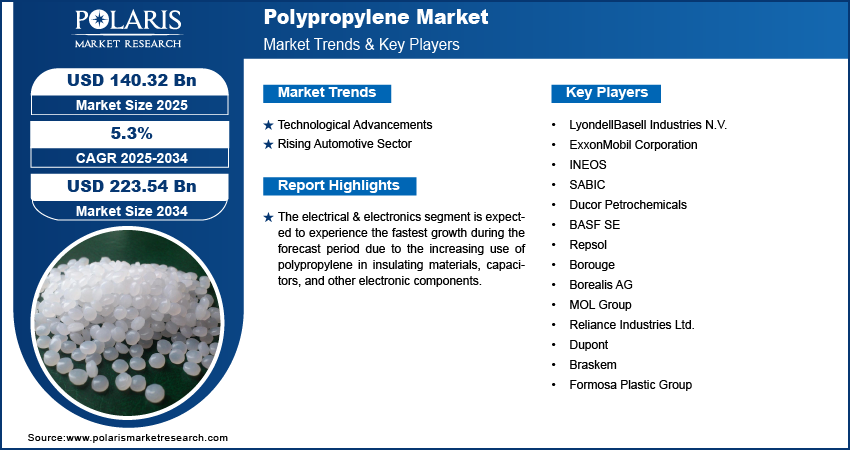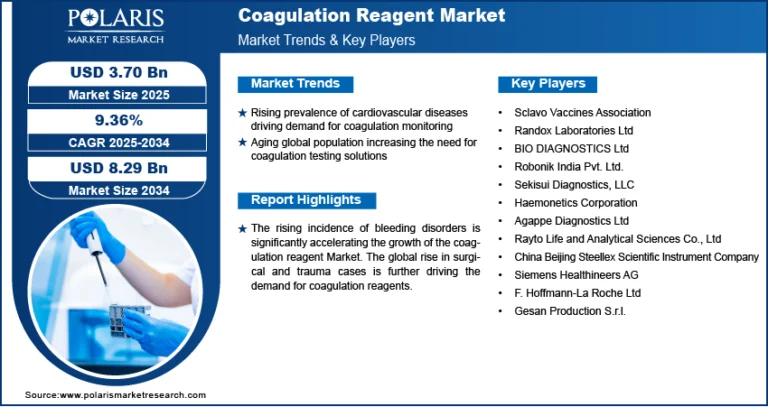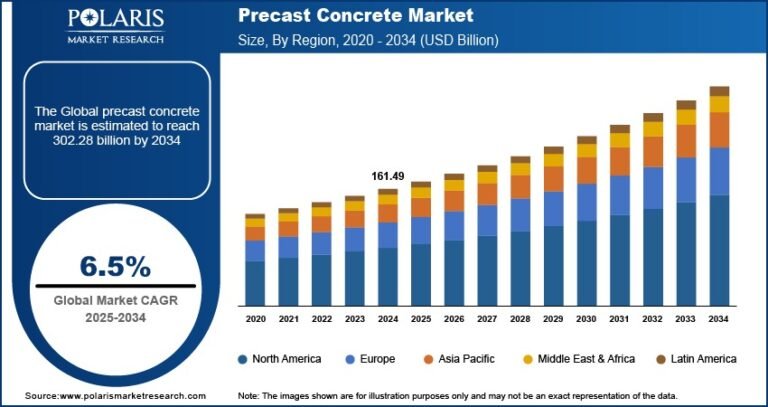Polypropylene Market Expected to Reach $223.54 Billion by 2034, Growing at a CAGR of 5.3%

The global polypropylene (PP) market continues to expand steadily, driven by increasing demand from packaging, automotive, construction, and consumer goods sectors. Polypropylene is a thermoplastic polymer known for its versatility, chemical resistance, durability, and recyclability. Its widespread applications in both rigid and flexible forms make it one of the most consumed plastics globally.
Polypropylene is extensively used in packaging materials (bottles, containers, films), automotive parts (bumpers, dashboards), textiles, medical devices, and electrical components. It exhibits excellent mechanical properties, low density, and resistance to moisture, which makes it an ideal material in various industrial and commercial applications.
Key Market Growth Drivers
-
Booming Packaging Industry
The rise of e-commerce, retail packaging, and food delivery services has fueled the demand for polypropylene-based packaging materials. PP’s lightweight, durable, and food-safe nature makes it a preferred choice for flexible and rigid packaging solutions. -
Automotive Sector Demand
Increasing focus on vehicle lightweighting to improve fuel efficiency and reduce emissions is driving the use of PP in automotive interiors and exterior parts. The polymer’s high impact resistance and moldability are key advantages in this sector. -
Construction and Infrastructure Development
Rapid urbanization and construction activities, particularly in developing countries, are boosting the demand for PP in pipes, insulation, fittings, and other building components. -
Medical and Healthcare Applications
The COVID-19 pandemic highlighted the importance of PP in medical PPE such as face masks, gowns, and syringes. Continued use in medical packaging and disposable medical devices is sustaining its demand in the healthcare sector. -
Advancements in Recyclable PP and Biopolymers
Growing environmental awareness and regulatory pressures are driving innovation in recyclable and bio-based polypropylene materials, creating new opportunities for sustainable product lines.
Market Challenges
-
Volatile Raw Material Prices: Polypropylene is derived from crude oil and natural gas. Price fluctuations in these commodities can significantly impact PP production costs.
-
Environmental Concerns and Regulations: Despite being recyclable, improper disposal and low recycling rates have made PP a target for environmental scrutiny and regulatory restrictions.
-
Competition from Alternative Materials: Emerging bioplastics and other engineered polymers may gradually capture market share, especially in packaging and consumer goods.





